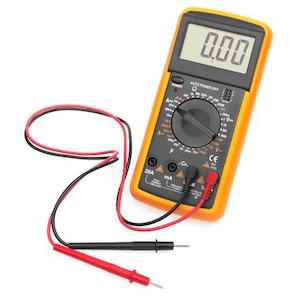Your Cart is Empty
Fuses
- ACK
- ACL
- AGA
- AGC
- AGW
- AGX
- ALS
- ANN
- ANL
- BAF
- BAN
- BBS
- CT
- C10
- DFJ
- DMM
- ECNR
- ECSR
- EDCC
- EET
- ET
- FE
- FEE
- FM
- FNA
- FNM
- FNQ
- FNQ-R
- FRN-R
- FRS-R
- FWA
- FWC
- FWH
- FWJ
- FWP
- FWX
- GLR
- GMA
- GMT
- HAC-R
- HCLR
- HCTR
- HVA
- JDL
- JJN
- JJS
- JKS
- KAA
- KAB
- KAC
- KBC
- KBH
- KLM
- KLU
- KON
- KOS
- KRP-C
- KTK
- KTK-R
- KTN-R
- KTS-R
- KTU
- LENRK
- LET
- LESRK
- LMT
- LP-CC
- LPJ
- LPN-RK
- LPS-RK
- MEN
- MEQ
- NON
- NOS
- REN
- RES
- S
- SC
- T
- TCF
- TCF-RN
- TPA
- TPC
- TPL
- TPN
- W
- 170H
- 170M
- 170L
- ACK
- ACL
- AGA
- AGC
- AGW
- AGX
- ALS
- ANN
- ANL
- BAF
- BAN
- BBS
- CT
- C10
- DFJ
- DMM
- ECNR
- ECSR
- EDCC
- EET
- ET
- FE
- FEE
- FM
- FNA
- FNM
- FNQ
- FNQ-R
- FRN-R
- FRS-R
- FWA
- FWC
- FWH
- FWJ
- FWP
- FWX
- GLR
- GMA
- GMT
- HAC-R
- HCLR
- HCTR
- HVA
- JDL
- JJN
- JJS
- JKS
- KAA
- KAB
- KAC
- KBC
- KBH
- KLM
- KLU
- KON
- KOS
- KRP-C
- KTK
- KTK-R
- KTN-R
- KTS-R
- KTU
- LENRK
- LET
- LESRK
- LMT
- LP-CC
- LPJ
- LPN-RK
- LPS-RK
- MEN
- MEQ
- NON
- NOS
- REN
- RES
- S
- SC
- T
- TCF
- TCF-RN
- TPA
- TPC
- TPL
- TPN
- W
- 170H
- 170M
- 170L

How To Test A Fuse (With Pictures)
June 11, 2020 3 min read
Be sure you know which fuse is blown before buying a replacement. Although it is easy to inspect glass fuses for continuity, most fuses are solid and cannot be inspected visually. We like testing our fuses with either a multimeter (shown first) or a continuity tester (shown last).
How To Test A Fuse With A Multimeter
We have a basic multimeter here. Multimeters can test the flow of current, voltage, and electrical current. It will send a current through one lead and measure it through the other. To test a fuse, you can measure its continuity or ohms, but we will be testing for ohms.
Setting Your Multimeter Up
Connect the black lead to the common socket and connect the red lead to the ohms (Ω) socket. Since we'll be measuring ohms, move the dial to ohms. We chose to move the dial to 2000M. As pictured above, if the metal tips are separate, your multimeter should be reading 1. To test if your multimeter is working, touch the metal tips together. Your multimeter should read very close to 0. Ours is reading 009 (shown below).
\
Testing a Fuse With A Multimeter
Be sure there is no current running through the fuse. Touch the metal tips to the opposite ends of the fuse. Fuses are not polarized, so it doesn't matter which tip touches which end. Since it's glass, we can visually inspect this fuse and see that it is still good. It's clear and the wire is still intact. Our multimeter confirms this by reading 009 - the same number shown when touching the metal tips to each other. If the fuse was blown, our multimeter would read 1 - the number shown when the tips were separate. Other kinds of multimeters might show oL if a fuse is blown.
- Blown Fuse = 1 or oL (same number as when tips are apart)
- Good Fuse = close to 0 (same number as when tips are touching)
Testing a Midget Fuse
Testing a midget fuse is similar to testing a glass fuse. Simply touch the metal tips to opposite ends of the fuse.
Testing a Plug Fuse
Plug fuses/screw fuses are common in homes built before the circuit breaker was available. Most of these fluses have small windows on top to visually inspect the internal wire. If the wire is broken or the glass is black, the fuse is blown. However, testing with a multimeter might be required. Set the fuse upside down. There will be metal threaded sidings a small metal top. Touch one tip to the top metal and one tip to the metal threaded sidings.
Testing An Automotive Fuse
You can visually inspect an automotive fuse. There is a small wire inside the colorful part connecting the two blades. If the wire is broken, the fuse is broken. To test with a multimeter, touch the metal tips to the two blades.
How To Test A Fuse Using A Continuity Tester
Continuity testers are a simple replacement to the multimeter. Make sure your continuity tester is working by touching the metal probe to its corresponding clip. If it is working, it should light up.
Similarly to a multimeter, simply touch the probe and clips to the end of a fuse to test it. If the tester lights up, the fuse is working. Be sure there is no current running through the fuse before testing.
Found Your Blown Fuse and Ready for a Replacement?
Check out our guide to finding the right fuse. Once you're ready, buy your fuse from us! We pride ourselves in carrying a vast selection of high-quality, low-price fuses. If we don't have what you're looking for, contact us! We're sure we can find it.










